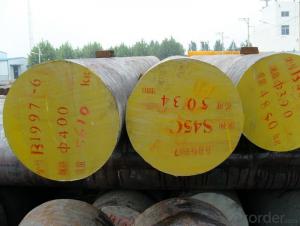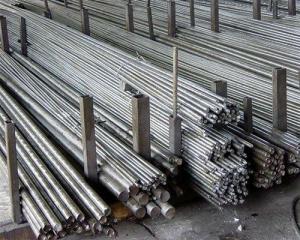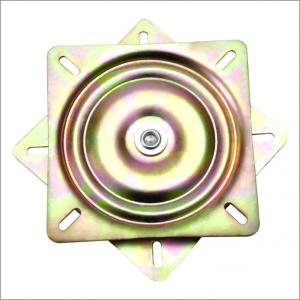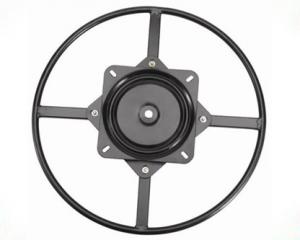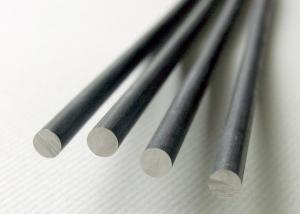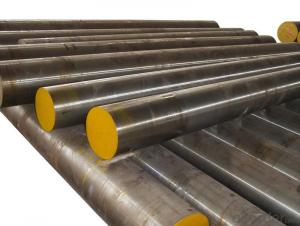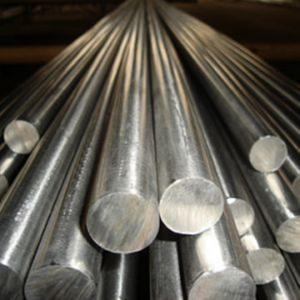T10 Cold Drawn Steel Round Bar with Various Thickness
- Loading Port:
- China main port
- Payment Terms:
- TT OR LC
- Min Order Qty:
- 25 m.t.
- Supply Capability:
- 10000 m.t./month
OKorder Service Pledge
OKorder Financial Service
You Might Also Like
Item specifice
The details of our Steel
1. Produce Standard: as the GB, AISI, ASTM, SAE, EN, BS, DIN, JIS Industry Standard
2. Produce processes: Smelt Iron -EAF smelt Billet - ESR smelt Billet -Hot rolled or forged get the steel round bar and plate
3. Heat treatment:
Normalized / Annealed / Quenched+Tempered
4. Quality assurance:
All order we can received Third party inspection, You can let SGS, BV,.. and others test company test and inspect our products before Goods shipping.
Product information
Round bar: |
Diameter : 3.2mm-2000mm |
Square bar: |
Size: 50mm * 50mm-600mm *600mm |
Plate steel/flat bar: |
Size: Thickness: 0.1mm-800mm Width: 10mm to 1500mm |
Tube/pipe: |
Size: OD: 6-219mm WT: 1-35 mm. |
Cold-rolled sheet: |
Thickness: 2-5mm Width:1000mm Length: 2000mm |
Hot-rolled sheet: |
Thickness:6-80mm Width: 210-610mm |
Length: |
We can supply any length based on the customer's requirement. |
Characters:
1, good comprehensive properties
2, good perfomance in cutting and processing after spheroids annealing
3, high hardness and homogrnization after quenching and tempering
4, high abrasive resistance and fatigue resistance
5, large amount of metal elements
6, lowest price
Product show

Workshop show
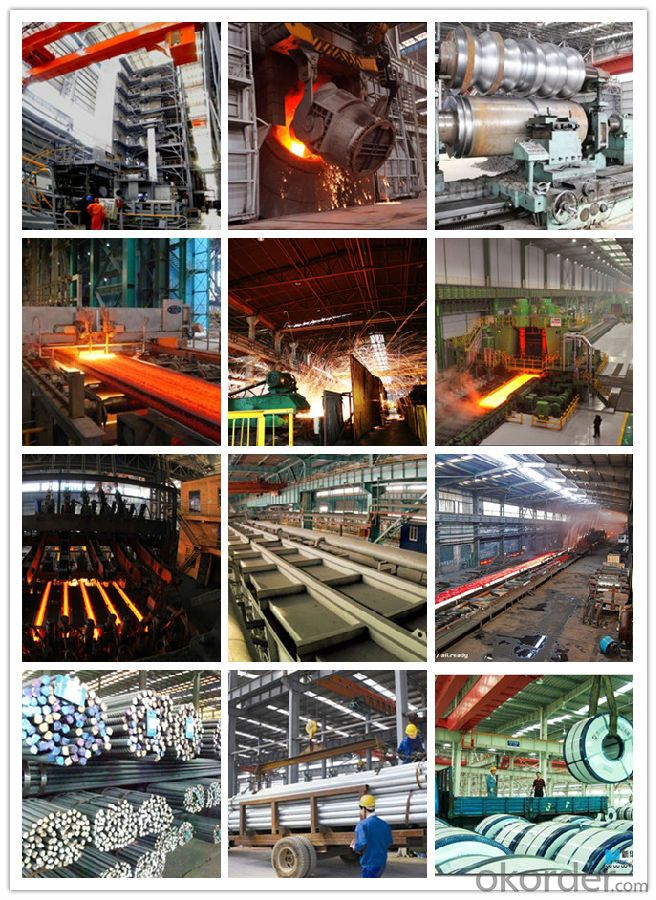
- Q:Can special steel be used in the agricultural industry?
- Yes, special steel can be used in the agricultural industry. Special steels, such as high-strength and corrosion-resistant varieties, can be utilized for various applications in agriculture. These steels can be used to manufacture farm equipment, machinery, tools, and infrastructure such as storage containers, irrigation systems, and agricultural buildings. The properties of special steel, such as durability, resistance to wear and tear, and ability to withstand harsh environmental conditions, make it suitable for enhancing productivity and longevity in agricultural operations.
- Q:What are the different annealing techniques used for special steel?
- There are several annealing techniques used for special steel, including full annealing, process annealing, and stress relief annealing. Full annealing involves heating the steel to a temperature above its critical point and then slowly cooling it, resulting in a refined grain structure and improved mechanical properties. Process annealing is a similar technique used to soften the steel after cold working or hot working processes. Stress relief annealing is used to reduce residual stresses in the steel by heating it to a temperature below its critical point and then gradually cooling it. These different annealing techniques are employed based on the specific requirements of the special steel and the desired outcome.
- Q:What are the limitations of special steel in certain applications?
- Special steel, although highly versatile and durable, does have certain limitations in certain applications. One limitation of special steel is its high cost. Special steel is typically more expensive to produce compared to regular steel due to the addition of various alloying elements. This can make it less economically viable for certain applications where cost is a significant factor, especially in large-scale projects or industries with tight budgets. Another limitation is its susceptibility to corrosion. While special steel is generally more resistant to corrosion compared to regular steel, it is still not completely immune to the effects of corrosion. In environments with high levels of moisture, chemicals, or extreme temperatures, special steel may still corrode over time if not properly protected or maintained. Special steel also has limitations in terms of formability and workability. Due to its higher strength and hardness, special steel can be more challenging to shape, bend, or weld compared to regular steel. This can limit its use in applications that require complex or intricate designs, as well as those that involve extensive fabrication or assembly processes. Furthermore, special steel may have certain limitations in terms of availability and supply chain. Not all types of special steel may be readily available in the market, especially in remote or less developed regions. This can make it difficult to source the required special steel for specific applications, leading to potential delays or compromises in project execution. Lastly, the specialized properties of special steel may not always be necessary or advantageous for certain applications. In some cases, regular steel or alternative materials may be more suitable and cost-effective, especially if the specific properties of special steel are not required for the intended use. Overall, while special steel offers numerous benefits and advantages, it is important to consider its limitations in certain applications. Careful evaluation of the specific requirements, cost-effectiveness, and availability of special steel is essential to ensure its successful and optimal use in any given situation.
- Q:What are the applications of special steel in the railway industry?
- Special steel has several important applications in the railway industry. It is commonly used for manufacturing railway tracks, as it possesses high strength and durability, ensuring the tracks can withstand heavy loads and frequent use. Additionally, special steel is employed in the construction of railway bridges and tunnels, offering excellent resistance to corrosion and extreme weather conditions. Moreover, special steel is utilized in the production of railway components such as wheels, axles, and couplers, ensuring optimal performance, safety, and longevity of the railway system.
- Q:What are the different types of welding techniques used for special steel?
- Special steel can be welded using various techniques depending on its specific requirements and properties. Some commonly used techniques for welding special steel include: 1. Stick welding, also known as Shielded Metal Arc Welding (SMAW), involves using a consumable electrode coated in flux to create an electric arc between the electrode and the base metal. This technique is ideal for thicker sections of special steel due to its ability to generate high heat and deep penetration. 2. Gas Metal Arc Welding (GMAW), also known as MIG welding, utilizes a continuously fed wire electrode and a shielding gas to protect the weld from atmospheric contamination. Its versatility and ability to produce high-quality welds with good control make it widely used for special steel. 3. Gas Tungsten Arc Welding (GTAW), also known as TIG welding, employs a non-consumable tungsten electrode and a shielding gas to create an electric arc. This technique is often preferred for special steel alloys that require precise control over the welding process and where weld quality and appearance are crucial. 4. Flux-Cored Arc Welding (FCAW), similar to GMAW, employs a continuously fed tubular electrode filled with flux. This technique is commonly used for special steel applications that necessitate high deposition rates and deep penetration, such as heavy fabrication or structural welding. 5. Submerged Arc Welding (SAW) involves creating an arc between a continuously fed bare electrode and the workpiece, while a layer of granular flux covers the arc. This technique is typically used for heavy-duty applications and thick materials, providing excellent weld quality and high deposition rates. 6. Laser Beam Welding (LBW) utilizes a highly focused laser beam to melt and join special steel parts. It offers precise control, high welding speeds, and minimal distortion, making it suitable for specialized applications that require high precision and minimal heat-affected zones. It is crucial to consider factors such as material composition, thickness, joint configuration, and desired weld properties when selecting the appropriate welding technique for special steel. Expertise and knowledge are essential to determine the best technique for a specific application, ensuring optimal results in terms of weld quality, strength, and durability.
- Q:What are the main advantages of using special steel in the construction of bridges?
- The main advantages of using special steel in the construction of bridges are its exceptional strength and durability. Special steel alloys offer high tensile strength, allowing for lighter bridge designs and reducing the overall weight of the structure. This not only makes construction and transportation easier but also minimizes the environmental impact. Additionally, special steel exhibits excellent corrosion resistance, ensuring the longevity of the bridge even in harsh weather conditions. Its superior toughness and resistance to fatigue make it ideal for withstanding heavy loads and frequent use, ensuring the safety and reliability of the bridge for many years.
- Q:What are the different methods for controlling the grain size in special steel?
- There are several methods for controlling the grain size in special steel. 1. Heat treatment: One common method is heat treatment, which involves subjecting the steel to specific temperatures and cooling rates. This process can be used to refine the grain size by controlling the rate of nucleation and growth of new grains. For example, slow cooling can promote the formation of larger grains, while rapid cooling can result in smaller grain sizes. 2. Alloying elements: Adding certain alloying elements to the steel can also influence the grain size. For instance, elements like vanadium, niobium, and titanium can form carbides, which act as nucleation sites, leading to finer grain sizes. On the other hand, elements like aluminum and silicon can promote the formation of larger grains. 3. Mechanical deformation: Applying mechanical deformation to the steel, such as through rolling or forging, can also affect the grain size. These processes cause grain refinement by breaking up larger grains into smaller ones. Additionally, severe plastic deformation techniques like equal-channel angular pressing can produce ultrafine grains in special steel. 4. Grain growth inhibitors: Certain elements can act as grain growth inhibitors, preventing the coarsening of grain size during heat treatment. Examples of such elements include boron and zirconium. By controlling the concentration of these inhibitors, it is possible to inhibit grain growth and maintain a desired grain size. 5. Controlled cooling: Controlling the cooling rate during solidification and heat treatment is another method for controlling grain size. By carefully controlling the cooling rate, it is possible to achieve a specific grain size or a desired distribution of grain sizes. It is important to note that the choice of method for controlling grain size in special steel depends on the specific application and desired properties of the steel. Different methods may be employed in combination to achieve the desired grain size and optimize the performance of the steel for its intended use.
- Q:How is special steel used in the construction of buildings and bridges?
- Special steel is used in the construction of buildings and bridges primarily due to its high strength and durability. It is commonly used for structural elements like beams, columns, and trusses, as well as for reinforcement purposes. Special steel alloys have superior properties, such as increased resistance to corrosion, heat, and impact, making them ideal for withstanding the heavy loads and harsh environmental conditions that buildings and bridges encounter. Additionally, special steel can be fabricated into various shapes and sizes, allowing for flexibility in design and ensuring structural integrity.
- Q:How does special steel contribute to the electronics industry?
- Special steel plays a crucial role in the electronics industry by providing key components and materials that are essential for the manufacturing and performance of electronic devices. It is used in the production of various electronic components including connectors, circuit boards, sensors, and power transmission components, due to its exceptional properties such as high strength, excellent corrosion resistance, and thermal conductivity. Special steel also enables the miniaturization and increased efficiency of electronic devices, enhancing their overall performance and durability.
- Q:How does special steel contribute to the energy storage industry?
- Special steel plays a crucial role in the energy storage industry by providing high-strength and corrosion-resistant components for the manufacturing of batteries, turbines, and other energy storage systems. It enables the production of more efficient and durable energy storage devices, improving their overall performance and lifespan. Special steel also helps in reducing energy losses during storage and transmission processes, thus contributing to the increased efficiency of the energy storage industry.
1. Manufacturer Overview |
|
|---|---|
| Location | |
| Year Established | |
| Annual Output Value | |
| Main Markets | |
| Company Certifications | |
2. Manufacturer Certificates |
|
|---|---|
| a) Certification Name | |
| Range | |
| Reference | |
| Validity Period | |
3. Manufacturer Capability |
|
|---|---|
| a)Trade Capacity | |
| Nearest Port | |
| Export Percentage | |
| No.of Employees in Trade Department | |
| Language Spoken: | |
| b)Factory Information | |
| Factory Size: | |
| No. of Production Lines | |
| Contract Manufacturing | |
| Product Price Range | |
Send your message to us
T10 Cold Drawn Steel Round Bar with Various Thickness
- Loading Port:
- China main port
- Payment Terms:
- TT OR LC
- Min Order Qty:
- 25 m.t.
- Supply Capability:
- 10000 m.t./month
OKorder Service Pledge
OKorder Financial Service
Similar products
New products
Hot products
Related keywords
